
Wernher Magnus Maximilian Freiherr von Braun was a German and American aerospace engineer and space architect. He was also a member of the Nazi Party and Allgemeine SS, as well as the leading figure in the development of rocket technology in Nazi Germany and later a pioneer of rocket and space technology in the United States.
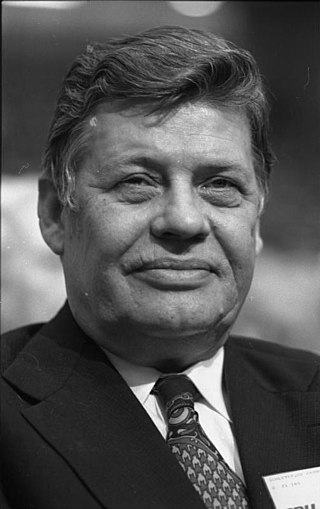
Hans "Hanns" Martin Schleyer was a German business executive, and employer and industry representative, and SS officer who served as President of two powerful commercial organizations, the Confederation of German Employers' Associations and the Federation of German Industries. Schleyer became a target for radical elements of the German student movement in the 1970s for his role in those business organisations, positions in the labour disputes, aggressive appearance on television, conservative anti-communist views, position as a prominent member of the Christian Democratic Union, and past as an enthusiastic member of the Nazi student movement and a former SS officer.
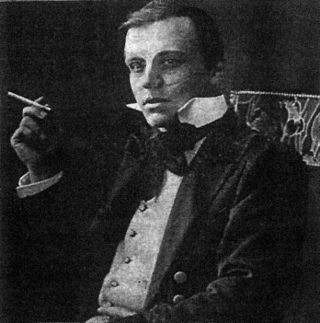
Hanns Heinz Ewers was a German actor, poet, philosopher, and writer of short stories and novels. While he wrote on a wide range of subjects, he is now known mainly for his works of horror, particularly his trilogy of novels about the adventures of Frank Braun, a character modeled on himself. The best known of these is Alraune (1911).

Alraune is a novel by German novelist Hanns Heinz Ewers published in 1911. It is also the name of the female lead character. The book originally featured illustrations by Ilna Ewers-Wunderwald.
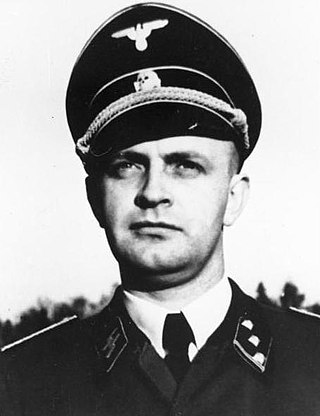
Heinz Linge was a German SS officer who served as a valet for the leader of Nazi Germany, Adolf Hitler, and became known for his close personal proximity to historical events. Linge was present in the Führerbunker on 30 April 1945, when Hitler committed suicide. Linge's ten-year service to Hitler ended at that time. In the aftermath of the Second World War in Europe, Linge spent ten years in Soviet captivity.

Heinz Haber was a German physicist and science writer who primarily became known for his TV programs and books about physics and environmental subjects. His lucid style of explaining hard science has frequently been imitated by later popular science presenters in Germany.
Stellan Rye was a Danish-born film director, active in the early 20th century. Rye was born in Randers.

Maria Friederike Cornelia "Frida" Strindberg was an Austrian writer and translator, who was closely associated with many important figures in 20th-century literature.

Alraune is a 1918 Hungarian science fiction horror film directed by Michael Curtiz and Edmund Fritz. It starred Géza Erdélyi. Little is known about this film, which is now believed to be lost. Alraune is German for "Mandrake". The film is based on a novel by German novelist Hanns Heinz Ewers published in 1911.

Alraune is a German science fiction horror film directed by Richard Oswald. Like the 1928 version, this movie again features Brigitte Helm in the role of Alraune. This version aimed for greater realism but is still based upon the original German myth.

Alraune, later renamed Unnatural: The Fruit of Evil, is a 1952 black and white West German science fiction film directed by Arthur Maria Rabenalt, based on the 1911 novel Alraune by German novelist Hanns Heinz Ewers, starring Hildegard Knef and Erich von Stroheim. The film involves a scientist who creates a woman (Knef) who is beautiful and yet soulless, lacking any sense of morality.
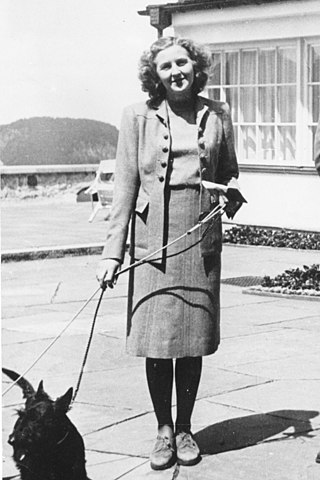
Eva Anna Paula Hitler was a German photographer who was the longtime companion and briefly the wife of Adolf Hitler. Braun met Hitler in Munich when she was a 17-year-old assistant and model for his personal photographer, Heinrich Hoffmann. She began seeing Hitler often about two years later.
Richard Gustav Heinz Tiessen was a German composer.

Hans Reimann (1889–1969) was a German satirist, novelist, and playwright. He wrote under the pseudonyms Max Bunge, Hans Heinrich, Artur Sünder, Hanns Heinz Vampir, and Andreas Zeltner.

Karl Hans Strobl was an Austrian author and editor. Strobl is best known for his horror and fantasy writings. Strobl was a member of the Nazi Party.
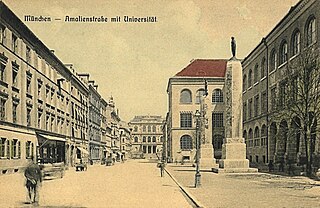
The Café Stefanie was a coffeehouse in Munich which around the 1900s till the 1920s was the leading artists' meeting place in the city, similar to the Café Größenwahn atmosphere of the Café des Westens in Berlin and the Café Griensteidl in Vienna. The cafe was located on the corner of Amalienstraße and Theresienstraße in the Maxvorstadt not far from the Simplicissimus cabaret and Die Elf Scharfrichter. At the time it was one of the few establishments in Munich which stayed open till 3:00 in the morning.
Hanns is a given name. Notable people with the name include:
Eros in Chains is a 1929 Austrian-German silent drama film directed by Conrad Wiene and starring Emmy Flemmich, Maly Delschaft and Walter Slezak.













